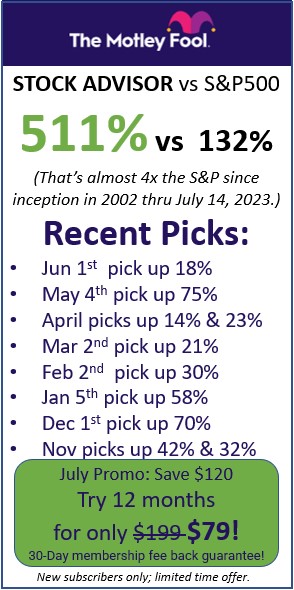
There is no better time to start saving than right now! We have gathered dozens of savings lesson plans together to help your students see exactly how saving and investing will impact their future. All too often young people get started in the “real world” saddled with so much debt that it is hard to grasp what is really going on around them. Avoiding the worst crunches of credit card debt is a great place to start, so give your students a taste of what it means to take out a loan with some of these lessons!
- Click Here for Investing Lesson Plans
- Click Here for other Personal Finance Lesson Plans
- Click Here for Budgeting Lesson Plans
- Click Here for Economics and Taxation Lesson Plans
- Click Here for Math Lesson Plans
Savings Lesson Plans For Elementary School And Up
You Can BANK on This!
- Topic:Credit Card
- Personal Finance Standard Covered: Credit and Debt(Standard 1) – Costs and benefits of different types of credit
- Source: EconEdLink, by Mickey Ebert
- Description: Students will assess both negative and positive incentives associated with credit-card use. They will identify profit as an economic incentive for banks to offer credit cards.
Why Money?
- Topic: Payment Methods
- Personal Finance Standard Covered: Spending and Saving (Standard 3) – Describe how to use different payment methods.
- Source: Kansas City Federal Reserve Bank
- Description: In this lesson students look at their purchases, and see the difference between paying with cash, checks, credit cards, or other money instruments
- Using HowTheMarketWorks: The reasons why we use different kinds of money is the same as why we use different kinds of investments. Once your students have a HowTheMarketWorks portfolio, you can talk about the different types of stock, and why different investors might prefer different classes even for the same company.
Click Here To Access This Lesson Plan
Savings Lesson Plans For Middle School And Up
Believe it or Not?
- Topic: Advertising
- Personal Finance Standard Covered: Saving and Spending (Standard 4) – Apply consumer skills with spending and saving choices
- Source: Econedlink, by Patricia Bonner
- Description: Students will explain the role of advertising from the seller’s point of view,distinguish between fact and opinion in advertisements and view advertisements with a healthy skepticism.
Click Here To Access This Lesson Plan
What’s the Cost of Spending and Saving?
- Topic: Saving
- Personal Finance Standard Covered: Spending and Saving (Standard 1) – Develop a plan for spending and saving.
- Source: EconEdLink, by Sharon Laux
- Description: Students will learn the benefits and opportunity cost of spending and saving. The will students learn how compound interest makes savings grow. They will learn the benefits of saving and investing when you are young.
Click Here To Access This Lesson Plan
Climbing the Savings Mountain
- Topic: Saving Money
- Personal Finance Standard Covered: Spending and Saving (Standard 2) – Develop a system for keeping and using financial records.
- Source: EconEdLink,Mickey Ebert
- Description:Students are sometimes clueless when it comes to saving money. It is important that our students learn that saving their money not only helps them achieve financial goals, but actually earns them extra money. In this lesson they will learn that there are a variety of ways in which to save, depending on whether they have short-term or long-term goals.
Click Here To Access This Lesson Plan
Banking Basics
- Topic: Savings
- Personal Finance Standard Covered: Spending and Saving (Standard 3) – Describe how to use different payment methods.
- Source: Boston Federal Reserve Bank
- Description: In this scenario, students find that their piggy bank has started to fill up. The lesson plan goes through the decisions of spending the cash, finding a bigger piggy bank, or how they can even open their first savings account, along with the advantages and disadvantages of each scenario.
- Using HowTheMarketWorks: All accounts at HowTheMarketWorks earn 3% interest on the cash that has not been invested. Have your students pick stocks they want to buy, but make sure they consider the trade-off of the 3% they can earn with just the cash, or the extra growth they might get by investing in their preferred stocks.
Click Here To Access This Lesson Plan
Calculating Simple Interest
- Source: EconEdLink, by Mike Fladlien
- Description: This is a basic introduction to interest and its calculation for students. It covers a few different interest rate levels and time periods.
- Using HowTheMarketWorks: We make it interactive! Have your students use our Investment Return Calculator to calculate the growth of savings over time, showing the difference between simple interest and compound interest, and even adjust according to inflation! This is also integrated into our Assignments feature, so your students can answer the quiz at the end and get credit using your Report Card.
Click Here To Access This Lesson Plan
Learning About Credit Card Use
- Topic: Credit Cards
- Personal Finance Standard Covered: Credit and Debt (Standard 1) – Analyze the costs and benefits of various types of credit.
- Source: EconEdLink, by Charlotte Higler
- Description: This lesson is designed to teach students about what exactly credit cards are and how they work, with time spent on their risks and why people use them.
- Using HowTheMarketWorks: Our Credit Card Payments Calculator is a perfect supplement to this lesson plan, where students can see the debt repayment of up to 4 credit cards! It is interactive, so they can see the differences in interest rates, minimum payments, and starting cash, and it is integrated with our Assignments feature so you can assign the quiz at the end for homework, and track all your students’ progress in their Report Card.
Click Here To Access This Lesson Plan
Your Credit Card
- Topic:Credit Card Payments
- Personal Finance Standard Covered: Credit and Debt (Standard 1) – Analyze the costs and benefits of various types of credit.
- Source: EconEdLink, by Mike Fladlien
- Description: This is somewhat similar to the lesson above, but focusing more on picking a credit card based on how long it would take to pay off a hypothetical purchase, given its interest rates and the size of the purchase.
- Using HowTheMarketWorks: Just like the lesson above, our Credit Card Payments Calculator is great for comparing multiple credit schemes, since it can have up to 4 credit cards with different interest rates calculating at the same time to show how long it would take to pay off a purchase! Since it is integrated into our Assignments, we make it easy to assign as homework.
Click Here To Access This Lesson Plan
The Benefits Of Investing Early
- Topic: Types of Credit
- Personal Finance Standard Covered: Credit and Debt (Standard 1) – Analyze the costs and benefits of various types of credit.
- Source: EconEdLink, by Julie Trivitt
- Description: This lesson focuses on the benefits of investing early, and how compound interest plays a huge role even with small amounts.
- Using HowTheMarketWorks: We have three calculators with this lesson in mind, all of them integrated into our Assignments feature. Our Compound Interest Calculator will show how much interest students would earn with their savings over time, our Investment Return Calculator can show the difference between Simple and Compound Interest, while adjusting for inflation, and our Millionaire Calculator can show students what rates of return they will need to achieve to earn a million dollars with the amount of money they can save every month!
Click Here To Access This Lesson Plan
A Penny Saved
- Topic: Interest growth
- Source: EconEdLink, by Mike Fladlien
- Description: These lesson plans walk students through the basics of interest growth and compounding. The second half goes through more complex topics like Real interest rate, returns on investment, and nominal interest rate, but the first half of the lesson is appropriate for younger students.
- Using HowTheMarketWorks: Our Compound Interest Calculator is great for the first half of the lesson, where students can see how their savings grows over time, while our Investment Return Calculator is great for the second half, since it can be used to control for inflation to find Real and Nominal interest rates. Since these are both integrated into our Assignments feature, it makes it easy to assign as homework, and follow all your students’ progress in their Report Card!
Click Here To Access This Lesson Plan
Credit Cards
- Personal Finance Standard Covered: Credit and Debt (Standard 1) – Analyze the costs and benefits of various types of credit.
- Source: Practical Money Skills For Life
- Description: This lesson plan is designed to introduce students to basic credit card terminology, and learn the basics of shopping for a credit card. They will also be given an opportunity to analyze a credit card statement.
- Using HowTheMarketWorks: Have your students look up several credit card offers and use their advertised rates in our Credit Card Payment Calculator to see how long it takes to pay off!
Access This Lesson Plan: Teacher Resource, Student Activities, Presentation
Savings Lesson Plans For High School And Up
Credit Reports and Credit Scores
- Topic: Credit Reports
- Personal Finance Standard Covered: Credit and Deb (Standard 2) – Borrower’s rights and responsibilities related to credit reports.
- Source: EconEdLink, by Carrie Hixon
- Description: Using a Better Money Habits video, this lesson explains the differences between credit reports and credit scores.
Click Here To Access This Lesson Plan
Earning Credit
- Topic: Credit Score
- Personal Finance Standard Covered: Credit and Debt (Standard 1) – Analyze the costs and benefits of various types of credit.
- Source: EconEdLink, by Martha Rush
- Description: This project has students work through a series of activities and provide them with a simulated credit score and auto loan interest rate. They can then use interest rates and amortization schedules to see the full cost of buying a car, and compare the difference between someone with a high and low credit score.
- Using HowTheMarketWorks: We have a great Car Loan Calculator that your students can use to find the full cost of buying a car, using various interest rates, cash down, and trade-in values. Its also integrated into our Assignments, so you can assign it as homework and track your students’ progress!
Click Here To Access This Lesson Plan
Fed Boy And The Catastrophe Clan
- Topic: Credit Card Debt
- Personal Finance Standard Covered: Credit and Debt (Standard 1) – Analyze the costs and benefits of various types of credit.
- Source: Kansas City Federal Reserve Bank
- Description: This lesson is designed to help students know the biggest pitfalls people fall into with credit card debt, along with the biggest government programs designed for consumer protection with credit.
- Using HowTheMarketWorks: Give your students a balance they need to pay off, like a new TV or some new furniture, and ask them to split it between credit cards with different interest rates using our Credit Card Payments Calculator. They will get a great interactive experience finding the best way to manage their cards, and with the integrated Assignments, its perfect for homework!
Click Here To Access This Lesson Plan
Car Loan Project
- Topic: Payment
- Personal Finance Standard Covered: Credit and Debt (Standard 1) – Analyze the costs and benefits of various types of credit.
- Source: EconEdLink, by Wendy Clark
- Description: This is a basic exercise examining the process of getting a car loan. Students will look at buying a car using financing, exploring different options for how they will pay for it
- Using HowTheMarketWorks: Our Car Loan Calculator has a bunch of different financing options, so you can make this whole lesson interactive!
Click Here To Access This Lesson Plan
Loan Amortization – Mortgage
- Topic: Mortgage
- Personal Finance Standard Covered: Credit and Debt (Standard 1) – Analyze the costs and benefits of various types of credit.
- Source: EconEdLink, by Mike Fladlien
- Description: This is a lesson plan walking through the basics of what a mortgage is, and how to calculate payments using Excel. This is perhaps the most advanced lesson plan on this list, but one that will give students the most hands-on application of using spreadsheets, interest rate calculation, and more tools that are so vital to a healthy understanding of personal finance.
- Using HowTheMarketWorks: You can use our Buy Vs Lease Calculator to get amortization schedules for annual or monthly mortgage payments, and see the break-even points with renting. It updates automatically, and includes tons of different fee types and rental costs!
Click Here To Access This Lesson Plan
The Credit Card Mystery
- Topic: Credit Card
- Personal Finance Standard Covered: Credit and Debt (Standard 2) – Summarize a borrower’s rights and responsibilities related to credit reports
- Source: EconEdLink, by Dave Koenig
- Description: This lesson is centered around giving students a better idea of how credit cards work, some of the biggest risks surrounding them (especially for people with multiple cards), and even some of the current government aid programs designed to help consumers manage their credit.
- Using HowTheMarketWorks: Our Credit Card Payments Calculator allows up to 4 different credit cards, each with different parameters, to see how long it can take to pay off a balance! Its also integrated into our Assignments, making it perfect for homework.
Click Here To Access This Lesson Plan
Do you have a great lesson plan you would like to share, or know where we can get more to feature here? Contact our Support Team and let us know!

 Back To School Challenge
Back To School Challenge Asset Turnover Ratio
Asset Turnover Ratio